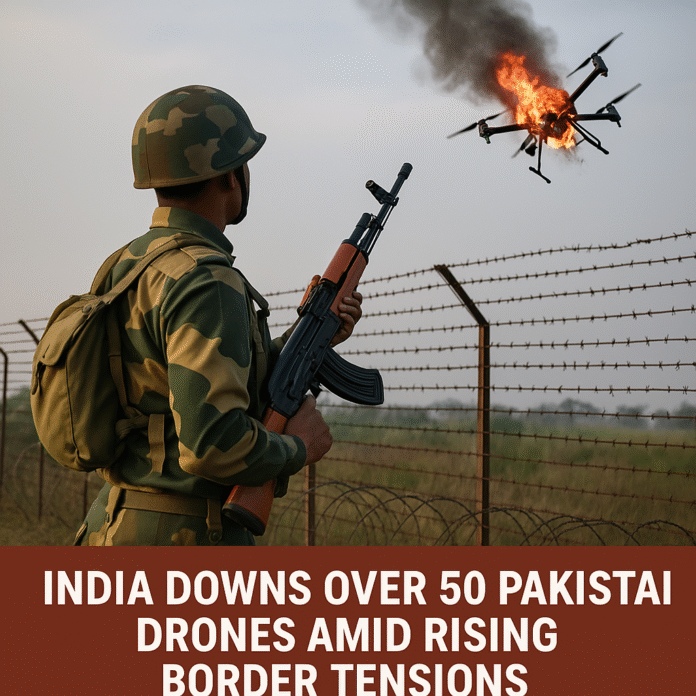India – May 9, 2025 – In a dramatic escalation along the Line of Control (LoC), the Indian Army successfully intercepted and neutralized over 50 Pakistani drones attempting to breach Indian airspace. The large-scale counter-drone operation marks one of the most significant aerial engagements between the two nations in recent years.
The Incident: A Coordinated Defense Response
According to reports, Pakistan launched a swarm of drones targeting strategic locations across Jammu, Samba, Akhnoor, Nagrota, and Pathankot. The Indian Army’s Air Defence units swiftly responded, deploying L-70 guns, Zu-23mm, Schilka systems, and advanced counter-UAS equipment to neutralize the aerial threats.
The operation unfolded overnight, with blackouts enforced in key cities as a precautionary measure. Despite the intensity of the attack, no casualties have been reported on the Indian side.
Strategic Implications and Military Readiness
The drone incursion follows India’s recent precision strikes on terror infrastructure in Pakistan and Pakistan-occupied Jammu and Kashmir (PoJK). The Indian Armed Forces remain on high alert, reinforcing border security and deploying additional air defense assets to counter further provocations.
Military analysts suggest that Pakistan’s drone strategy aims to test India’s air defense capabilities while escalating tensions in the region. However, India’s swift and effective response demonstrates its technological superiority and preparedness in aerial warfare.
Civilian Impact and Diplomatic Reactions
Residents near the LoC reported a tense night, with drone sightings and retaliatory fire continuing into the early hours. Schools in border areas have been temporarily closed, and security forces are conducting sweeping operations to ensure no further aerial threats remain.
International observers have urged both nations to exercise restraint, emphasizing the need for diplomatic dialogue to prevent further escalation. However, with Pakistan’s continued provocations, India remains firm in its stance to defend its sovereignty.



